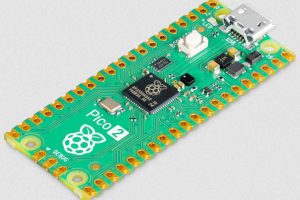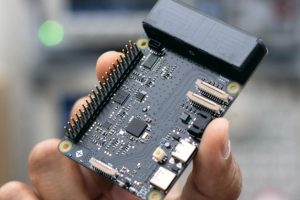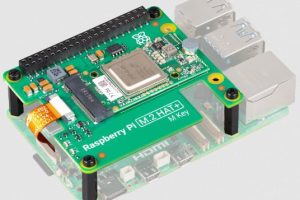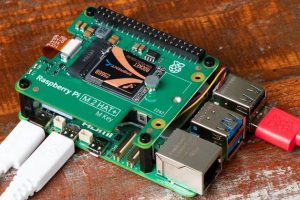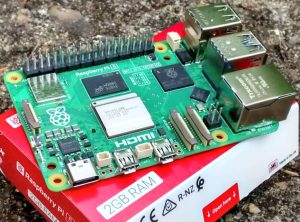
As well as reduced memory size, cost-saving comes from changing the main processor IC.
4 and 8Gbyte models have the 16nm Broadcom BCM2712C1, which has quad 2.4GHz Arm Cortex-A76 cores.
“Alongside the features required to power a Raspberry Pi, it also contains functionality intended to serve other markets, which we don’t need,” said Raspbearry Pi CEO Eben Upton. “This dark silicon is permanently disabled in the chips we use, but takes up die space, and therefore adds cost. The new [version] strips away all that unneeded functionality, leaving only the bits we need. From the perspective of a Raspberry Pi user, it is functionally identical to its predecessor: the same fast quad-core processor, the same multimedia capabilities, and the same PCI Express bus that has proven to be one of the most exciting features of the Raspberry Pi 5 platform.”
The organisation’s own flavour of Linux, Raspberry Pi OS, will continue to run well on the 2Gbyte version, according to the organisation, although “our most demanding users, who want to drive dual 4kp60 displays, or open a hundred browser tabs, or compile complex software from source, will probably stick with the existing higher memory-capacity variants of Raspberry Pi 5”.
Educational users
The original Raspberry Pi single board computer was intended to be a low-cost educational computer for children and others on which to learn computer programming, with low consequences if the hardware was accidentally bricked. Raspberry Pi 5 is arguably no longer this, but smaller cheaper products have been added to the range for education:
Priced at $15 and with a 65 x 30mm footprint, the Raspberry Pi Zero 2 W is now the educational computer in the range. It has a 1GHz quad-core Cortex-A53 processor, 512MB of SDRAM and wireless capability.
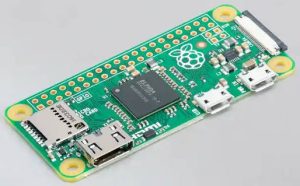 If Wi-Fi is not required, the 65 x 30mm Pi Zero (right) costs ~$10 retail and comes with a single-core 1GHz CPU and 512Mbyte of ram. A display can be connected to its Mini HDMI port (and composite video for TV connection), and it has two Micro USB ports: one a power input and the other an OTG port. The HAT-compatible 40pin IO header is retained for interfacing with external electronics and it has a v1.3 CSI camera interface. There is also a Wi-Fi version of this single-core board.
If Wi-Fi is not required, the 65 x 30mm Pi Zero (right) costs ~$10 retail and comes with a single-core 1GHz CPU and 512Mbyte of ram. A display can be connected to its Mini HDMI port (and composite video for TV connection), and it has two Micro USB ports: one a power input and the other an OTG port. The HAT-compatible 40pin IO header is retained for interfacing with external electronics and it has a v1.3 CSI camera interface. There is also a Wi-Fi version of this single-core board.
 Electronics Weekly Electronics Design & Components Tech News
Electronics Weekly Electronics Design & Components Tech News
